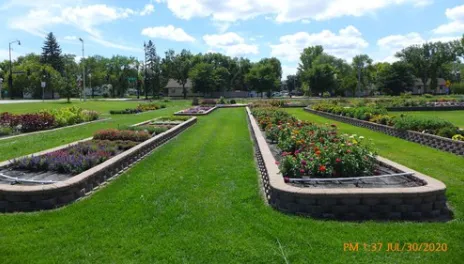Understanding Fertility for the Garden
Hello! I hope you are well!
We received about 0.36 inches of rain in the past week. The high temperature for the past week ranged from 40 to 69 degrees Fahrenheit with an average of 59 degrees Fahrenheit. That average is 7 degrees lower than the 66 degrees Fahrenheit average we should be having. The temperature forecast for the coming week looks to be slightly below normal.
Backyard poultry producers please keep practicing biosecurity! The Highly Pathogenic Avian Influenza (HPAI) is still spreading in wild birds, but no new cases for backyard and commercial poultry operations in North Dakota were reported. In wild birds 197 confirmed cases have been recorded, the most in the United States!
Once we dry out it will be time to plant garden, so I thought I would discuss soil fertility and the sources of nutrients. Plants need water, oxygen, carbon dioxide, and minerals for proper growth. Roots need oxygen for proper growth and roots take up the majority of the water and nutrients plants use. The way to get the most water and oxygen to the roots and to improve drainage is to increase pore space of the soil. The best way to increase pore space and to improve fertility is to increase the amount of organic matter in the soil. The organic matter acts as a sponge holding water and nutrients and adding pore space. The darker the soil, the greater the organic matter content. Add compost to increase organic matter. Clay particles are also useful in holding water and nutrients, although clay can hold too much water. Sand does not hold water or nutrients.
The only way to know what nutrients are in the soil is to have the soil tested. Testing the soil is important to reducing water pollution from excess minerals such as phosphorus, making sure minerals are not out of balance, and knowing the pH of the soil. The closest soil testing laboratory to our area is AgVise in Northwood, ND. To collect a two-cup soil sample, take 10 to 12, 8-inch deep soil cores (0.75 inch diameter) randomly from the garden. The Extension office has a soil probe available to check out.
Soil pH should be maintained between 6.0 and 7.0 for most vegetables, although many can tolerate pH of 5.5 and up to 7.5. Wood ashes act as a liming material to raise soil pH, so be very careful how much you apply.
The primary minerals for plants are nitrogen, phosphorus, and potassium. When purchasing a fertilizer, the three numbers on the bag in the following sequence represent the percentage of nitrogen, phosphate, the source for phosphorus, and potash, the source for potassium, by weight. Secondary nutrients include calcium, magnesium, and sulfur. Micro-nutrients are also needed by plants, but these nutrients are usually sufficient in the soil, unless it is a sandy soil. Micro-nutrients include boron, chlorine, copper, iron, manganese, molybdenum, and nickel.
If you plan to grow your vegetables organically, obtaining nutrients can be difficult and expensive. Animal manure will provide all three primary nutrients and some secondary and micro-nutrients, but at low concentrations. Poultry manure has the highest concentration of nutrients. Organic sources of nitrogen include dry fish meal, McGeary Organics 8-1-1, animal tankage, blood meal, and soybean meal. Organic sources of phosphorus include rock phosphate, colloidal phosphate, bone meal, and animal tankage. Organic sources of potassium include greensand, McGeary Organics 0-2-9, and kelp.
Non-organic sources of nitrogen include urea (46-0-0), 28% liquid urea-ammonium nitrate (28-0-0) [10.66 pounds nitrogen/gallon], monoammonium phosphate (11-52-0), diammonium phosphate (18-46-0), and 10-34-0. Non-organic sources of phosphate include the last three mentioned with nitrogen and superphosphate (0-46-0). Non-organic sources of potassium include monopotassium phosphate (0-52-34), potassium nitrate (13-0-44), potassium chloride (0-0-60) and potassium sulfate (0-0-50). There are already blended fertilizers having all three nutrients, such as 12-12-12 that can be purchased at most stores carrying fertilizer, but you may not need as much phosphorus as is included in those blends and for some crops there will not be enough nitrogen. To obtain the fertilizers having single nutrients visit your local agriculture retailer.
Always incorporate nutrients to reduce run off and leaching and volatilization of urea.
